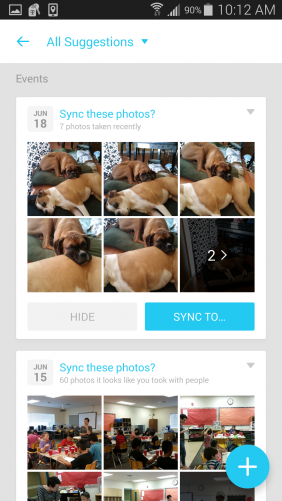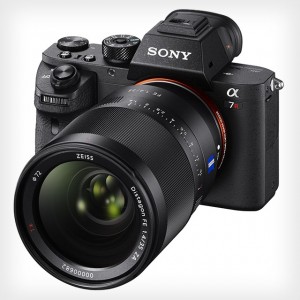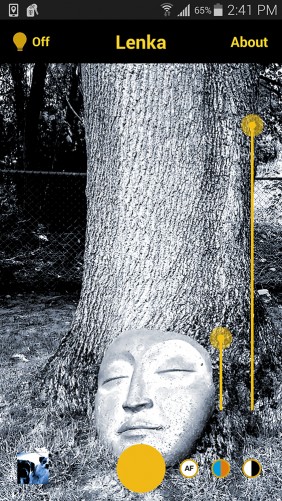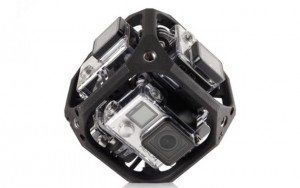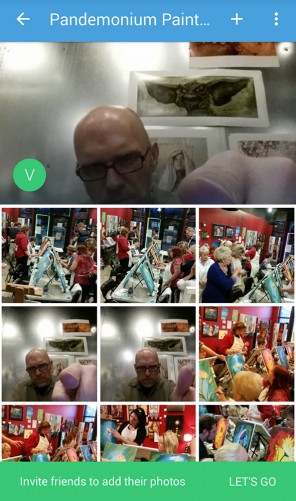Reviews

Colby Brown Made The Switch
DPmag Review
The world traveler switched to Sony’s a7 line of mirrorless cameras because they were so much smaller. He’s stayed with them because they are so much better.
Colby Brown might best be described as a humanitarian photographer. He travels the world, camera in hand, looking to help those who are most in need. Along the way he's built a beautiful portfolio of dramatic landscape and travel photos, but it's making a difference with his camera that motivates him.
Trained as a first responder, Brown is unlike many photographers who report to disaster zones after tsunamis, flood, and earthquakes. His agenda is first and foremost to help. Sometimes it's with a camera, often it's not.
"I was working on a project in northern Thailand when Typhoon Yolanda hit the Philippines," Brown says. "The typhoon came through and about five days later I was on the ground in Tacloban. I used my contacts within the Filipino government and essentially got onto a supply ship and was out there photographing and documenting the challenges of what was happening. I did the same thing in Haiti."
"I have a background in emergency administration and planning," he says. "I'm actually a wilderness first responder and I have background more in emergency response than photography, at least in terms of actual education. I'm not a disaster chaser, but if there's a possibility for me to help, I generally do. A lot of people want to help, they just don't necessarily know how. And the problem is, especially in a response situation, the resources are finite. I take all my own supplies. I'm not taking up resources, I'm not getting in anyone's way, but I'm helping as it's needed. There's definitely a way to do it consciously, to do it right, and to still make an impact both from a photography standpoint and of course with those extra skillsets I can do things that most other people aren't comfortable with. I'm doing my best so that, if I have an impact, it's a positive impact."
The humanitarian work is obviously very important to Brown. He founded The Giving Lens, an organization that combines photographic workshops with hand-on assistance for NGOs worldwide. But it's his first love, the love of travel, at the root of it all. He caught the travel bug in high school and after college decided 9-to-5 was not a good fit. So he asked himself what job might best facilitate travel? His answer, of course, was photographer. The young nomad had sold all his belongings and saved his money, so he was able to purchase a Canon DSLR system—largely because it was the kind of camera his parents had. Many miles and three years later, Brown was hired by National Geographic to lead student expeditions in South America, and now less than a decade into his career he's a seasoned world traveler with the jaw-dropping portfolio to prove it.
Lugging a 45lb camera bag through customs, up mountains, across glaciers and into caves, it didn't take long for Brown to wish for a better way. Just a couple of years into his career he was already looking for a lighter, more compact camera system. The problem was, he wasn't willing to sacrifice image quality to save space. The game changed when, in the fall of 2013, Sony announced the a7 and a7R full-frame mirrorless interchangeable lens cameras. Suddenly carrying a compact camera system required no compromises. Ultimately, Brown says, it was a blessing in many more ways than he could have imagined. Foremost was the amazing image quality.
"The whole idea of a full-frame mirrorless camera caught my eye," Brown says. "That caused me to pay attention. It was the first time that I felt that I wouldn't be giving something up to move to a lighter and more portable camera system. I was really blown away by the dynamic range and the resolution. I was like 'I can get so much power out of such a small, compact system? Yeah, okay, I can make this work.' That's when the transition started."
The Eureka moment came when Brown began editing images from his Sony cameras alongside older shots. Because of his busy schedule, it's a workflow that continues to this day.
"Once I started switching to Sony," he says, "I'd still be going back and editing the Canon work, and then editing the Sony work. Just seeing the difference between the two… Even to this day I'm still editing images I took on my 1Dx from three or four years ago, and I have to have different workflows for them. There's just so much difference in dynamic range, the shadow and noise is different, all those types of things. I've changed how I do any bracketing and how I do any sort of blending, luminosity masking… The whole process is different depending on what type of raw file I'm working with. That to me was the wow moment. I don't have to do a five-image bracket in order to do a higher dynamic range with a scene. Two Sony files might give the same range as I was getting with five before. Or sometimes it's a single file. It was specifically the dynamic range that blew me away, and when I mix that with the resolution, 36 megapixels with no antialiasing filter, compared to a 22- and an 18-megapixel camera… Comparing all of those different variables was very eye opening."
Brown made his switch carefully. He began getting rid of Canon bodies but kept a few Canon lenses with adapters on the a7 and a7R. This negated much of the weight savings, but it allowed him to get comfortable with a new camera system while working with glass he knew well. When the a7S was introduced he added that to his arsenal as well. He still relies on it for its super-low noise at astoundingly high ISOs. He's especially fond of it for nighttime astral photography and low light situations in far flung locations without access to electricity and lights. As Sony fleshed out its ecosystem, Brown continued adding Sony's native glass to his kit.
"It's now actually quite robust," he says of the line, "even if the sheer number of lenses isn't in the same ballpark as Canon and Nikon. It's become excellent over time, and it's often rated sharper than its Canon and Nikon counterparts—specifically the 16-35mm f/4 FE, the 70-200mm f/4 FE, the 35mm f/1.4 FE, the 55mm f/1.8 FE and the new 90mm f/2.8 FE macro. Add Zeiss's connection to the mix and the Loxia and Batis lines of lenses have helped propel Sony's FE lens ecosystem to the next level."
As for favorites, Brown says he'd have to pick two.
"The 16-35mm f/4 is just a super-sharp lens," he says. "Because I shoot so much landscape and travel stuff, for anything outside of portraits I love that lens. It's a great lens all around, it's compact, it takes filters very nicely. (I use circular polarizers and neutral density filters quite a bit.) That's probably the lens I use the most. My next favorite is the new Zeiss 85mm f/1.8 Batis. The Batis lineup is specifically for the FE mount. It's just creamy bokeh, it's my absolute favorite travel portrait lens. I haven't seen a lens like this in quite a long time. And especially since it's a native lens I don't have to use any adapters. It's quite phenomenal to have that. I have the kit that I'm normally shooting, and then I throw in this compact, nondescript lens that just makes amazing images."
Brown says that as a frequent traveler on "crazy small" foreign aircraft with ever-shifting restrictions, he's gotten in the habit of weighing his bags.
"When I moved from Canon," he says, "I had a 5D Mark III, a 1Dx, a 24-70, a 16-35, a 70-200 and I probably carried a tilt-shift lens or two, and if I needed it a macro or a portrait lens. All of that weighed quite a bit—usually it was about 40 or 45 pounds, inside a backpack. When I made the switch to the a7R and one or two other Sony bodies, mixed with three or four of the Sony native lenses, the weight of my bag was literally cut in half, almost to the ounce."
"And now that I'll replace two of the other bodies that I would typically use on a trip with the a7R II," he adds, "it's only continuing to get lighter. Even though I'm getting more gear, it's getting better at what it's doing, so I'm being smarter about what I'm carrying, and carrying even less than I was when I first made that switch."
Brown came for the size, but he stayed for the image quality. There have been other benefits too. "The Sony bodies have apps that you can purchase and download from the PlayMemories store," he says. "I can have a time-lapse app on my camera to essentially help me easily create a time-lapse and put it together while still storing the raw files. It's that kind of stuff you don't see from a lot of other manufacturers. It was all peripheral in my mind when I made the switch. It was like, 'this is light, the image quality is good, I'm done carrying around a 50lb pack.' And now I totally feel that Sony is leading the innovative line of camera manufacturers right now. To me, they're leading the way. How long they stay on top is up to them, and to Canon and Nikon, but to me it's definitely been a wonderful effect of the switch. Using Sony, you're getting all these other wonderful things that seem to be outpacing a lot of other manufacturers."
Essentially what you have is sunset and sunrise merge into one. When you get close to the summer solstice, for most of Iceland the sun is setting at maybe 11:50, and then the sun will rise again at 1:45. But the time in between, because it's not going too far below the horizon, and the right clouds allow for the light to be awesome from like 10:30pm to 4am in the morning. So you can essentially shoot all night long and travel long distances and still get great light. It's pretty awesome. It's phenomenal for that stuff.
And in the wintertime it's opposite, because you have long nights which give you a better chance with the northern lights. And relatively moderately affordable, especially during the wintertime when they do specials. I've seen them this year when it was like $650 or $700 will get you over there and give you three or four days of going out aurora hunting and all that fun stuff. They're getting pretty aggressive with getting more people there.
I was waiting until I didn't have to make sacrifices. Or at least sacrifices for my style of photography weren't going to outweigh the benefits of having a lighter pack. Initially, starting out, I was focused on the a7R specifically for my landscape and travel work, from a tripod, controlled environment, manually focusing, that sort of thing.
The a7R and the a7S make up most of it. I also use the A6000, which is the smaller APS-C sensor, that's to get the extra reach with the telephoto, say the 70-200 and I want to get to 350mm.
The a7R II is the newest camera coming out, and that's the one that for the first time is blending all three. It's 42 megapixels but it has the same dynamic range as the a7R, the same autofocus as the standard a7, but then it also has quite high ISO sensitivity as well. I've seen images of 25,000 ISO on a 42-megapixel image and it's incredibly clean. From a technical standpoint it's pretty mindboggling.
To me what's really interesting is that up until this new camera, all the lines have essentially been built to be relatively specialized. If you're a landscape photographer, then the a7R is your choice. But for documentary work, it's the a7S. But if you want a little bit of everything it's the a7 II. So I go into my process of the camera that I'm choosing based on the needs of the project and what I want to shoot, and my new go-to camera now is the a7R II. It's the newest one. That by far has the best of all of them. It's not quite as high bias of sensitivity, the autofocus probably is the best that Sony has, but it's just taking all of the different great features that people have liked about these different camera lines and putting them into a single body.
For me now, going from where I was taking an a7 II, an a7S and an a7R on a lot of trips because I do shoot a variety of things, where now most of the time I'm probably going to take an a7R II and maybe an a7S, and none of the other bodies. Because it's essentially replaced them for me.
Trained as a first responder, Brown is unlike many photographers who report to disaster zones after tsunamis, flood, and earthquakes. His agenda is first and foremost to help. Sometimes it's with a camera, often it's not.
"I was working on a project in northern Thailand when Typhoon Yolanda hit the Philippines," Brown says. "The typhoon came through and about five days later I was on the ground in Tacloban. I used my contacts within the Filipino government and essentially got onto a supply ship and was out there photographing and documenting the challenges of what was happening. I did the same thing in Haiti."
"I have a background in emergency administration and planning," he says. "I'm actually a wilderness first responder and I have background more in emergency response than photography, at least in terms of actual education. I'm not a disaster chaser, but if there's a possibility for me to help, I generally do. A lot of people want to help, they just don't necessarily know how. And the problem is, especially in a response situation, the resources are finite. I take all my own supplies. I'm not taking up resources, I'm not getting in anyone's way, but I'm helping as it's needed. There's definitely a way to do it consciously, to do it right, and to still make an impact both from a photography standpoint and of course with those extra skillsets I can do things that most other people aren't comfortable with. I'm doing my best so that, if I have an impact, it's a positive impact."
The humanitarian work is obviously very important to Brown. He founded The Giving Lens, an organization that combines photographic workshops with hand-on assistance for NGOs worldwide. But it's his first love, the love of travel, at the root of it all. He caught the travel bug in high school and after college decided 9-to-5 was not a good fit. So he asked himself what job might best facilitate travel? His answer, of course, was photographer. The young nomad had sold all his belongings and saved his money, so he was able to purchase a Canon DSLR system—largely because it was the kind of camera his parents had. Many miles and three years later, Brown was hired by National Geographic to lead student expeditions in South America, and now less than a decade into his career he's a seasoned world traveler with the jaw-dropping portfolio to prove it.
Lugging a 45lb camera bag through customs, up mountains, across glaciers and into caves, it didn't take long for Brown to wish for a better way. Just a couple of years into his career he was already looking for a lighter, more compact camera system. The problem was, he wasn't willing to sacrifice image quality to save space. The game changed when, in the fall of 2013, Sony announced the a7 and a7R full-frame mirrorless interchangeable lens cameras. Suddenly carrying a compact camera system required no compromises. Ultimately, Brown says, it was a blessing in many more ways than he could have imagined. Foremost was the amazing image quality.
"The whole idea of a full-frame mirrorless camera caught my eye," Brown says. "That caused me to pay attention. It was the first time that I felt that I wouldn't be giving something up to move to a lighter and more portable camera system. I was really blown away by the dynamic range and the resolution. I was like 'I can get so much power out of such a small, compact system? Yeah, okay, I can make this work.' That's when the transition started."
The Eureka moment came when Brown began editing images from his Sony cameras alongside older shots. Because of his busy schedule, it's a workflow that continues to this day.
"Once I started switching to Sony," he says, "I'd still be going back and editing the Canon work, and then editing the Sony work. Just seeing the difference between the two… Even to this day I'm still editing images I took on my 1Dx from three or four years ago, and I have to have different workflows for them. There's just so much difference in dynamic range, the shadow and noise is different, all those types of things. I've changed how I do any bracketing and how I do any sort of blending, luminosity masking… The whole process is different depending on what type of raw file I'm working with. That to me was the wow moment. I don't have to do a five-image bracket in order to do a higher dynamic range with a scene. Two Sony files might give the same range as I was getting with five before. Or sometimes it's a single file. It was specifically the dynamic range that blew me away, and when I mix that with the resolution, 36 megapixels with no antialiasing filter, compared to a 22- and an 18-megapixel camera… Comparing all of those different variables was very eye opening."
Brown made his switch carefully. He began getting rid of Canon bodies but kept a few Canon lenses with adapters on the a7 and a7R. This negated much of the weight savings, but it allowed him to get comfortable with a new camera system while working with glass he knew well. When the a7S was introduced he added that to his arsenal as well. He still relies on it for its super-low noise at astoundingly high ISOs. He's especially fond of it for nighttime astral photography and low light situations in far flung locations without access to electricity and lights. As Sony fleshed out its ecosystem, Brown continued adding Sony's native glass to his kit.
"It's now actually quite robust," he says of the line, "even if the sheer number of lenses isn't in the same ballpark as Canon and Nikon. It's become excellent over time, and it's often rated sharper than its Canon and Nikon counterparts—specifically the 16-35mm f/4 FE, the 70-200mm f/4 FE, the 35mm f/1.4 FE, the 55mm f/1.8 FE and the new 90mm f/2.8 FE macro. Add Zeiss's connection to the mix and the Loxia and Batis lines of lenses have helped propel Sony's FE lens ecosystem to the next level."
As for favorites, Brown says he'd have to pick two.
"The 16-35mm f/4 is just a super-sharp lens," he says. "Because I shoot so much landscape and travel stuff, for anything outside of portraits I love that lens. It's a great lens all around, it's compact, it takes filters very nicely. (I use circular polarizers and neutral density filters quite a bit.) That's probably the lens I use the most. My next favorite is the new Zeiss 85mm f/1.8 Batis. The Batis lineup is specifically for the FE mount. It's just creamy bokeh, it's my absolute favorite travel portrait lens. I haven't seen a lens like this in quite a long time. And especially since it's a native lens I don't have to use any adapters. It's quite phenomenal to have that. I have the kit that I'm normally shooting, and then I throw in this compact, nondescript lens that just makes amazing images."
Brown says that as a frequent traveler on "crazy small" foreign aircraft with ever-shifting restrictions, he's gotten in the habit of weighing his bags.
"When I moved from Canon," he says, "I had a 5D Mark III, a 1Dx, a 24-70, a 16-35, a 70-200 and I probably carried a tilt-shift lens or two, and if I needed it a macro or a portrait lens. All of that weighed quite a bit—usually it was about 40 or 45 pounds, inside a backpack. When I made the switch to the a7R and one or two other Sony bodies, mixed with three or four of the Sony native lenses, the weight of my bag was literally cut in half, almost to the ounce."
"And now that I'll replace two of the other bodies that I would typically use on a trip with the a7R II," he adds, "it's only continuing to get lighter. Even though I'm getting more gear, it's getting better at what it's doing, so I'm being smarter about what I'm carrying, and carrying even less than I was when I first made that switch."
Brown came for the size, but he stayed for the image quality. There have been other benefits too. "The Sony bodies have apps that you can purchase and download from the PlayMemories store," he says. "I can have a time-lapse app on my camera to essentially help me easily create a time-lapse and put it together while still storing the raw files. It's that kind of stuff you don't see from a lot of other manufacturers. It was all peripheral in my mind when I made the switch. It was like, 'this is light, the image quality is good, I'm done carrying around a 50lb pack.' And now I totally feel that Sony is leading the innovative line of camera manufacturers right now. To me, they're leading the way. How long they stay on top is up to them, and to Canon and Nikon, but to me it's definitely been a wonderful effect of the switch. Using Sony, you're getting all these other wonderful things that seem to be outpacing a lot of other manufacturers."

It's actually a self portrait of myself. That's in Iceland. The relatively interesting story behind that is, I went to Iceland twice last winter, and the first time that I went I was ice climbing out on the glacier and my crampons clipped each other and I was tied into a rope and I had my ice axe in because we were doing a very light rappel into a cave. So my crampons clipped and I essentially started sliding on the side of the glacier. It was a very gentle slide, it wasn't going to be that bad. The problem was, my ice axe was inside my harness and the tip of the ice axe caught a lip of ice and popped up and broke two of my ribs. So I had to not only finish photographing what I was there for, I left and then three weeks later I came here to this. So three weeks after I broke two ribs I had to be back ice climbing in Iceland in order to get to some of these locations. So this photo was the culmination of two months of a little bit of agony, looking for the right moment, and then getting into this specific cave, which is called Crystal Ice Cave right there near Jökulsárlón, and then setting up the shot I had some friends who helped and then I ran out there and was able to get the right kind of scale and perspective by adding myself to the image. I'm essentially looking up into a hole into the cave, where ice melt has created this natural spire. So it's natural light filtering in there through the cave and onto the cave floor. The chaos and the beauty of patterns and these natural formations. I obsessed with them. Every chance I get, when I have some free time, I'm like I'm gonna go to Iceland this winter! This was the 16-35mm f/2.8 Sony for the Alpha mount, so I used the a7R and a Sony adapter. The 16-35mm for the FE mount wasn't out yet. |
WHY HE LOVES ICELAND
In the summer, because I've gone so many time I've been in all the different seasons. My favorite is definitely split between summer and winter. In summer it's for the midnight sun, when you have a sunrise and sunset that lasts for like six hours. So you have six hours of crazy light, assuming you have the right conditions.Essentially what you have is sunset and sunrise merge into one. When you get close to the summer solstice, for most of Iceland the sun is setting at maybe 11:50, and then the sun will rise again at 1:45. But the time in between, because it's not going too far below the horizon, and the right clouds allow for the light to be awesome from like 10:30pm to 4am in the morning. So you can essentially shoot all night long and travel long distances and still get great light. It's pretty awesome. It's phenomenal for that stuff.
And in the wintertime it's opposite, because you have long nights which give you a better chance with the northern lights. And relatively moderately affordable, especially during the wintertime when they do specials. I've seen them this year when it was like $650 or $700 will get you over there and give you three or four days of going out aurora hunting and all that fun stuff. They're getting pretty aggressive with getting more people there.
SWITCH TO MIRRORLESS
I started my first photography company back in 2006 with not much more than a Canon Xti and a few lenses. Why Canon? Simply because my father had bought my mother a Canon Rebel the year before and I figured that was the best choice. For the next 7 years, I used a plethora of Canon bodies, but year after year I found myself working in more remote and challenging locations which made carrying a 45lb pack a bit of a burden. I distinctly remember a trip to Nepalese Himalayas in 2011 when I was hiking up to Gokyo Ri (17,500 ft.) and thinking, 'there has to be a better way.' However at that time there really were no other options. Even when mirrorless first began to hit the market, the trade offs in image quality, dynamic range and auto focus were just too big to make the switch. That all changed in October of 2013 when Sony first announced their a7 & a7R line of full frame mirrorless cameras.I was waiting until I didn't have to make sacrifices. Or at least sacrifices for my style of photography weren't going to outweigh the benefits of having a lighter pack. Initially, starting out, I was focused on the a7R specifically for my landscape and travel work, from a tripod, controlled environment, manually focusing, that sort of thing.
FAVORITE CAMERA MODELS
Sony has the a7R and the a7S, and the standard a7. The R stands for resolution. The a7R has the highest dynamic range, the highest resolution, no antialiasing filter. The S stands for sensitivity. You're dropping some of the resolution, it's actually only a 12 megapixel camera, but you can shoot clean images from 10,000 to 25,000 ISO because of what they've done with the sensor. You can do some really amazing stuff, and if you're doing video you can pump that much higher and be shooting 4K video at 100,000 ISO and essentially be seeing in the dark.The a7R and the a7S make up most of it. I also use the A6000, which is the smaller APS-C sensor, that's to get the extra reach with the telephoto, say the 70-200 and I want to get to 350mm.
HE PRIMARILY SHOOTS THE a7R, AND THERE'S A NEW ONE
I have the entire Sony line, and most of my stuff is generally a little more travel and landscape oriented, so the resolution usually plays more into what I need. I carry the a7S with me when I'm doing astrophotography or humanitarian work where I'm working in very dark places with no electricity, or if I want to do dawn and dusk stuff.The a7R II is the newest camera coming out, and that's the one that for the first time is blending all three. It's 42 megapixels but it has the same dynamic range as the a7R, the same autofocus as the standard a7, but then it also has quite high ISO sensitivity as well. I've seen images of 25,000 ISO on a 42-megapixel image and it's incredibly clean. From a technical standpoint it's pretty mindboggling.
To me what's really interesting is that up until this new camera, all the lines have essentially been built to be relatively specialized. If you're a landscape photographer, then the a7R is your choice. But for documentary work, it's the a7S. But if you want a little bit of everything it's the a7 II. So I go into my process of the camera that I'm choosing based on the needs of the project and what I want to shoot, and my new go-to camera now is the a7R II. It's the newest one. That by far has the best of all of them. It's not quite as high bias of sensitivity, the autofocus probably is the best that Sony has, but it's just taking all of the different great features that people have liked about these different camera lines and putting them into a single body.
For me now, going from where I was taking an a7 II, an a7S and an a7R on a lot of trips because I do shoot a variety of things, where now most of the time I'm probably going to take an a7R II and maybe an a7S, and none of the other bodies. Because it's essentially replaced them for me.



